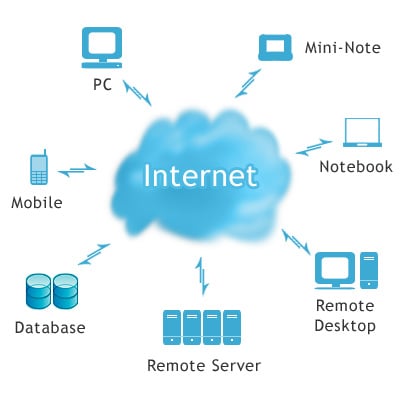Many people, companies, and technology experts think cloud computing is a trend or simply a "thing of the future."
But what many people don't realize is that cloud computing is very much here, and is very much embedded in everyday business technology life.
With so many different broad definitions and vague descriptions, it can be hard to grasp everything that cloud computing is and what it entails. The basic idea behind the cloud computing phenomenon is that data and resources can be accessed--privately, publicly, or a hybrid of both--via a virtual datacenter called "the cloud." This allows providers to deliver applications that can be accessed through web browsers via personal computers or mobile devices, while the data and resources are stored at a remote location.

The most important aspect of cloud computing is that it is a means of delivery computing as a service rather than as a product. This allows for greater accessibility, faster running applications, less maintenance, and overall easier manageability.
Deployment Models
Cloud computing can be arranged into four distinctive models: public, community, private, and hybrid. Each model can be beneficial depending on the respective use, though they also have some drawbacks. A public cloud is accessible to the general public. The provider allows for accessibility to resources over the internet and can either offer it free of charge or on a pay-to-use basis. Of course, using a public cloud service can pose some privacy and security issues. Being open to the public, a public cloud system can create easy access for anyone to the data, resources, or services offered by it.
A community cloud offers cloud services that are shared with various organizations and companies. Shared costs and convenient interplay between groups are the leading advantages. Similar privacy and security threats are applicable to community clouds as public clouds, as a substantial amount of information is reachable to others as well as the possibility of alteration or even deletion at the hand of the service provider.

Private clouds are accessible only by a single, typically a company or an organization. This allows for maximum security and privacy. However, because only one group is allowed access to a private cloud, there is dispute as to whether using the cloud model is feasible at all because many feel that private clouds lack the economic model that makes cloud computing such an intriguing concept in the first place.

Hybrid clouds are a mix of any two or more services and take advantage of what each of those services has to offer. Companies and individuals are able to obtain degrees of fault tolerance combined with locally immediate usability without dependency on internet connectivity. Basically this means that if part of the system were to fail, it would continue to run though on a reduced level and have no reliance on internet signal strength or connection whatsoever.
In my next blog we will talk about the security on the different types of cloud.

Sources:
http://blogs.idc.com/ie/?p=190
http://csrc.nist.gov/publications/nistpubs/800-145/SP800-145.pdf
http://news.cnet.com/8301-13556_3-10150841-61.html
http://en.wikipedia.org/wiki/Cloud_computing#cite_note-nist-44
